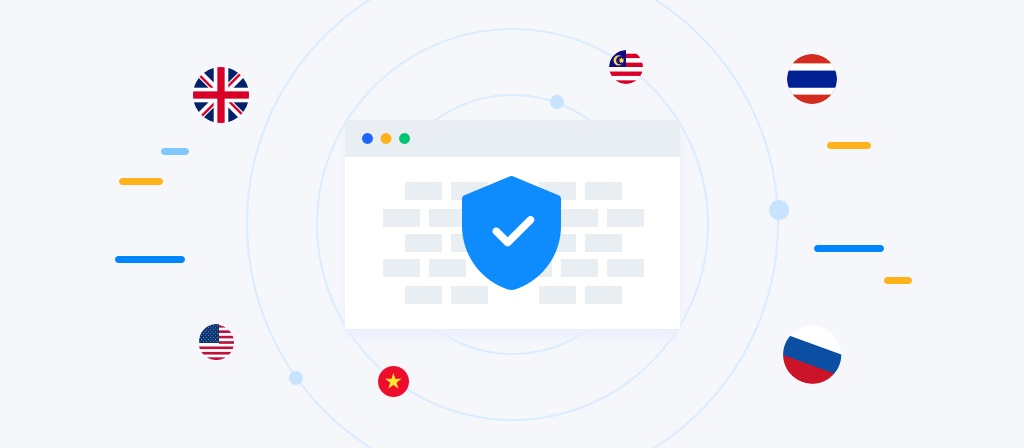
In modern internet usage, the IP address plays a crucial role. It not only identifies the location of each device on the network but also affects access speed, anonymity, and data collection efficiency. However, there are times when you may need to hide or change your IP address, especially when engaging in web scraping, bypassing restrictions, or maintaining anonymity. This is where IP rotation becomes an essential technology.
This article will delve into the definition of IP rotation, how it works, and how to effectively implement IP rotation, helping you understand the advantages and applications of this technique.
What is IP Rotation?
IP rotation refers to the process of changing the IP address regularly within a network to avoid exposing a single IP. When interacting with the internet, using different IP addresses for communication with servers can effectively prevent websites from tracking or blocking the same IP repeatedly.
How It Works: By utilizing a proxy pool, the system regularly or according to defined rules switches the proxy server’s IP address. Every time you access a website through a proxy, a new IP address is used, making it difficult to track the activities back to a specific device or location.
What is Proxy Rotation?
Proxy rotation is a technique that allows you to constantly switch between different proxy servers to change the IP address. This rotation can be automated, switching between proxy IPs based on time intervals or the number of requests made.
- Time-based Rotation: Change the IP at regular intervals, e.g., every hour or daily.
- Request-based Rotation: Use a different IP address for every HTTP request.
- Hybrid Rotation: Combines both time-based and request-based rotation for optimal anonymity and efficiency.
Why Rotate Proxies?
Avoid IP Restrictions
Many websites set limitations or block users who make frequent requests from the same IP. This is especially common during web scraping, automation, or high-traffic access. Rotating IPs can effectively avoid these restrictions.
Increase Anonymity
By using different IP addresses for each interaction with a target website, it becomes difficult to track the user’s true location or device information, significantly improving online anonymity.
Reduce the Risk of Blocking
Making too many requests from the same IP address can be detected as bot-like behavior, leading to IP bans. Rotating proxies can minimize the chances of being blocked.
Enhance Efficiency
Using multiple proxy pools helps distribute the load, preventing proxy servers from becoming overloaded, which could lead to request failures or delays.

Use Cases for Proxy Rotation
Web Scraping: Web crawlers and data collection tools typically need to gather information from multiple web pages. By rotating IP addresses, crawlers can avoid triggering anti-scraping mechanisms, ensuring smooth and continuous scraping.
Social Media Management: Many businesses or social media managers need to manage multiple accounts, frequently logging in and posting content. Proxy rotation prevents multiple accounts from being flagged as originating from the same IP, protecting account security and avoiding bans.
Ad Click Verification: Advertisers need to verify the effectiveness of their ad campaigns and user click behavior. By rotating proxies, advertisers can simulate clicks from different regions and devices to ensure data authenticity and reliability.
E-commerce Monitoring: Competitor analysis, price monitoring, and other e-commerce tasks require frequent visits to target websites. Proxy rotating prevents IP bans from the target e-commerce site.
Online Gaming: Some online games monitor player behavior based on their IP address. Rotating IPs reduces the risk of being banned for multiple accounts using the same IP address.
How to Rotate IP Addresses?
Manual Rotation
Users can manually change their proxy IP by selecting different proxy servers to obtain a new IP address. However, this method is typically not suited for large-scale operations as it requires frequent manual intervention.
Automated Rotation
With proxy service providers offering automatic rotation features, users can easily implement IP address switching. For instance, the system can be set to automatically rotate IPs after each request or after a defined time interval. This method is ideal for large-scale web scraping, social media management, and similar tasks that need frequent IP changes.
Using Rotation Tools
Several software tools help users automate IP rotation. These tools allow users to define rotation rules and manage proxy pools efficiently.
Comparison of Rotation Methods
- Time-Based Rotation: This method is ideal for scenarios where not every request needs a different IP. For example, with less frequent website visits, rotating the IP every hour or day is sufficient to avoid being flagged as a bot.
- Request-Based Rotation: A different IP address is used for every HTTP request. This method is the most effective at enhancing anonymity and preventing blocking, especially for web scraping and large-scale data collection.
- Hybrid Rotation: Combining both time-based and request-based rotation, this method balances the need for efficiency and security. It is suitable for scenarios where both scalability and safety are crucial.

Reliable Proxy Rotation Providers
- 922S5Proxy
922S5Proxy offers high-quality residential proxy pools that support automated IP rotation, making it ideal for large-scale web scraping, social media management, and other similar activities. Its proxies come from real user devices, providing higher anonymity and stability.
- Brightdata
Brightdata offers a large proxy pool with flexible rotation strategies. It is ideal for enterprise-level users, particularly in scenarios that require massive data collection and custom proxy rotation solutions.
Conclusion
IP rotation and proxy rotation are essential technologies for enhancing anonymity, avoiding bans, and improving efficiency. For applications such as large-scale data collection, social media management, and competitive monitoring, using reliable rotation proxy services significantly improves stability and performance.
When choosing a proxy service, it’s essential to consider factors such as proxy type, rotation strategies, and the service provider’s reputation.
Frequently Asked Questions
How often is the IP rotated?
- The frequency of rotation depends on your use case. For web scraping, it is usually best to rotate the IP with each request. For less frequent activities, rotating the IP every hour or daily can suffice.
How do I choose the right proxy rotation provider?
- When selecting a provider, consider the size of their proxy pool, the rotation frequency, the level of anonymity, and the provider’s technical support. Make sure the provider offers stable, reliable IPs and flexible rotation options.
Is proxy rotation suitable for all industries?
- Yes, proxy rotation is beneficial for any industry that requires bypassing IP restrictions, increasing anonymity, avoiding bans, or enhancing efficiency. This includes data scraping, market monitoring, and online advertising verification.



